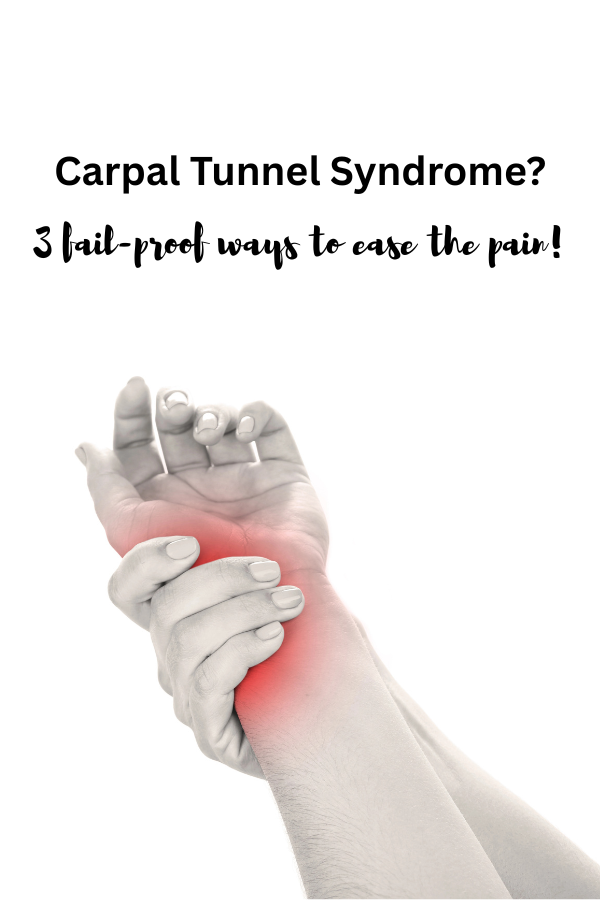Whether you’re middle-aged or pregnant, there is a chance you will develop carpal tunnel syndrome. This is when the median nerve, which runs down the forearm and into the hand, is squeezed at the wrist. Many people with this condition will experience numbness, pain, tingling, and weakness in the hand and fingers.
Although carpal tunnel syndrome is more commonly diagnosed in 40 to 60-year-olds, particularly women, it can affect anyone, of any age. Younger people might be diagnosed with this condition if they have specific risk factors, such as performing repetitive hand movements at work or fluid retention during pregnancy.

As this syndrome can occur in anyone, it is important to know how to ease the discomfort and pain you might encounter. Thankfully, this post has outlined three of the main ways to do just that.
Lifestyle Modifications
One of the best ways to cope with carpal tunnel syndrome is by adapting your lifestyle to the condition. This is particularly useful if this development has been caused by repetitive hand movements, maybe as a part of your job. If so, then the first change to make is to ensure your work station is set up to minimize wrist strain.
For example, your desk chair must be at a height that allows your elbows to rest at a 90-degree angle when your hands are on the keyword. Your forearms should be parallel to the floor in this position. This will help you to maintain a neutral wrist position, which will reduce pressure and strain on the median nerve.
Additionally, you should incorporate regular breaks into your day, especially when performing repetitive activities. This will allow your hands and wrists to rest for a while before you continue on with work. During these breaks, it could be beneficial to practice hand and wrist stretches, like circling your wrists and extending your fingers.
Conservative Treatments
The next method to ease discomfort and pain from carpal tunnel syndrome is the use of conservative treatments. These treatments focus on relieving the pain and discomfort through non-surgical methods and carpal tunnel syndrome medical devices. Your doctor might advise you to wear a wrist splint, particularly at night, to maintain a neutral wrist position. This would reduce pressure on the median nerve and alleviate numbness, tingling, and other symptoms.
Medications are also considered to be conservative treatments for this condition. Over-the-counter pain relievers, such as ibuprofen, can be used to reduce inflammation and pain for a short time. You might be given corticosteroid injections, which reduce pressure on the median nerve. These injections, which are administered into the carpal tunnel, are more effective than oral corticosteroids.
Medical Interventions
Finally, if all else fails, you might require surgical treatment to ease the pain and discomfort of carpal tunnel syndrome. There are two main surgical approaches to dealing with this condition – open release surgery and endoscopic surgery. Both involve cutting the transverse carpal ligament to relieve pressure on the median nerve.
Surgery is often only applicable to those who have tried other treatment options for roughly six to twelve weeks. Although surgery is generally effective in minimizing the pain and discomfort, this is not a guarantee, and some people have experienced persistent pain and/or other problems afterward.
To conclude, if you are diagnosed with carpal tunnel syndrome, there are things you can try to ease any discomfort and pain you might experience. Not all treatments will be effective for you, but something will work eventually.
Latest posts by Meredith (see all)
- Disney World in December: A Real Mom’s Guide to Cutting the Overwhelm and Finding the Magic - October 15, 2025
- Not “Bouncing Back” After Pregnancy? You’re Not Alone! - August 9, 2025
- Carpal Tunnel Syndrome: 3 Methods to Ease the Pain and Discomfort - June 30, 2025


Leave a Reply